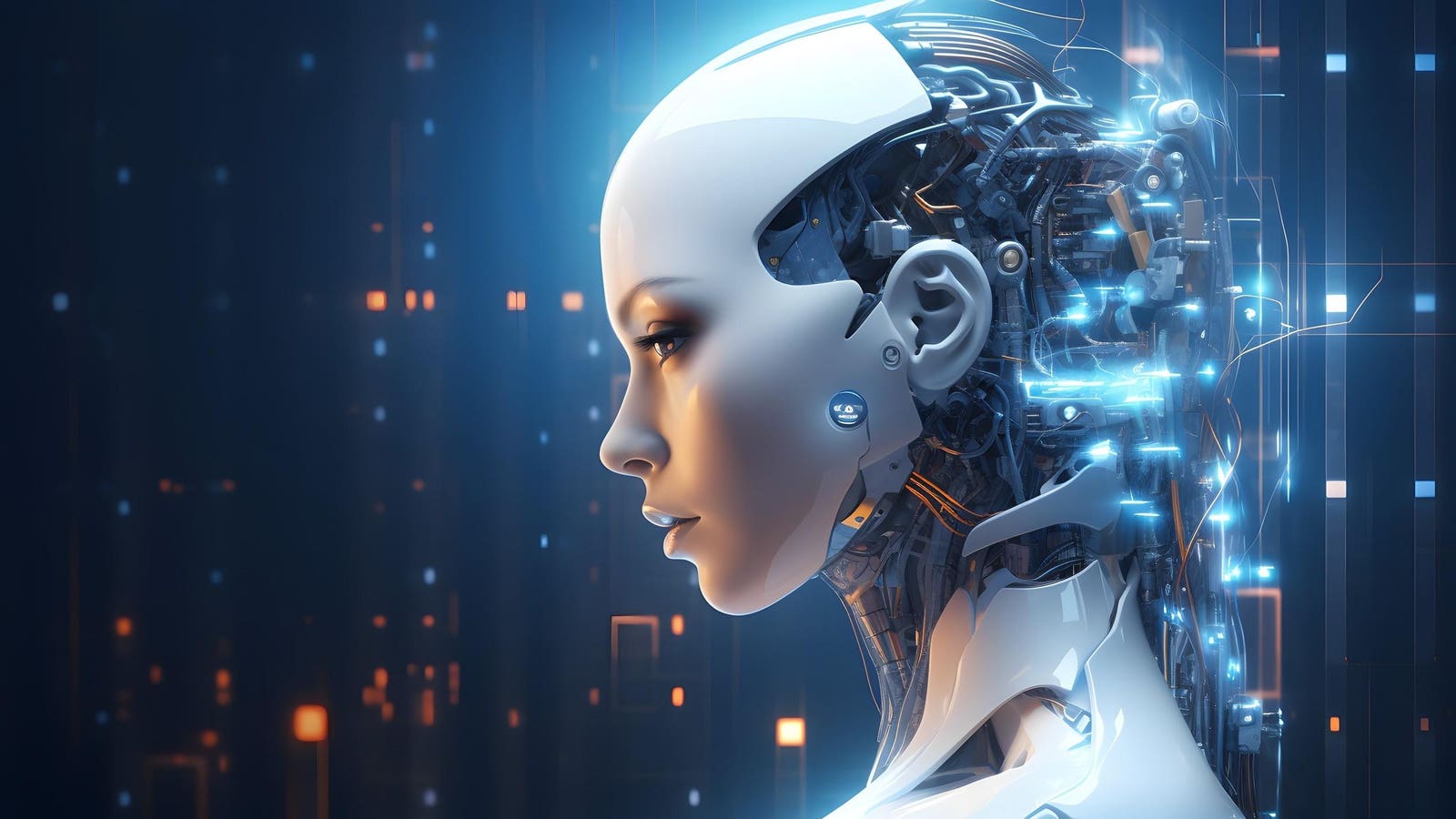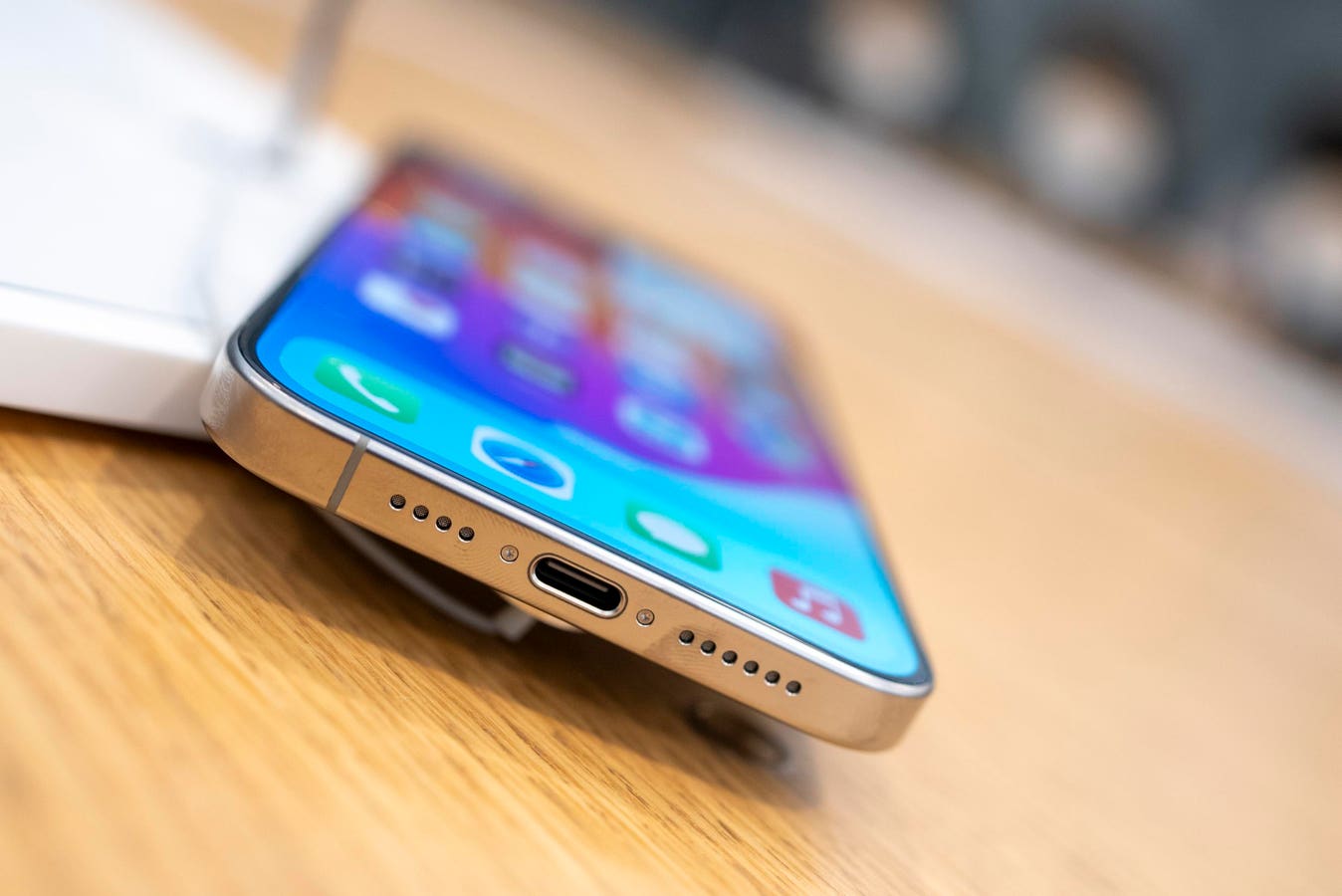Humanoid robots — long seen as futuristic — are already here, walking, talking, and working among … More
Walking, talking humanoid robots that were once firmly the domain of science fiction are on their way. In fact, a Morgan Stanley report recently predicted that 13 million human robots will be among us by 2035, rising to one billion by 2050.
But we probably won’t have to wait even 10 years to see one. In fact, what could be considered the first wave of truly useful, human-like machines is already here.
Recent years have seen a number of prototypes and production models stepping out of the robotics labs of some of the world’s leading AI companies and into the world.
In many ways, they are all very different from each other. However, they all embody the core concept of a machine that mimics our own anatomical design in order to carry out physical tasks that previously only humans could do.
So in this piece, I’ll take a look at some of the most advanced, useful, impressive and sometimes scary humanoid robots that are already among us today (or at least, will be soon).
Optimus Generation 2
Manufacturer: Tesla
Height: Approx 1.73 meters (5ft 8in)
Weight: 57kg (125 lbs)
Cost: Projected around $20,000 to $30,000 when produced at scale
Probably the most famous of the current batch of humanoid robots. Most of the things Elon Musk does receive media attention, including his claim that he expects this robot to be more important to the company than its cars in the future. The Generation 2 model was announced in 2023 and is said to have successfully carried out tasks in Tesla factories. The robot is reportedly built around the same end-to-end automation framework as the cars, with different elements like motors, battery systems, AI and navigation networked in the same way. The main differentiators are its tactile hands and human-like motion. Optimus has been shown picking up eggs, dancing, serving drinks, performing household chores, and playing Rock Paper Scissors with Kim Kardashian. However, there has been criticism that some of Optimus’s actions and speech during public demonstrations appear to be assisted by humans via telepresence (remote control) rather than truly AI-driven behavior.
All-New Atlas
Manufacturer: Boston Dynamics
Height: Approx 1.5 meters (4ft 11in)
Weight: 80kg
Cost: Unknown – not commercially available
This is the name currently being used for what will be the newest model in the Atlas series. Since 2013, videos of Boston Dynamics’ Atlas robots, most recently Atlas HD, have amazed and amused YouTube audiences, where it has been seen sprinting, flipping, dancing and often falling over in amusing ways. Unlike previous models, the All-New Atlas is fully electric rather than powered by hydraulics. The switch-over will make the robots lighter and more damage-resistant, with more precise control over their movements.
See highlights of the previous Atlas models here and meet the All-New Atlas here.
Neo Gamma
Manufacturer: 1X Technologies
Height: 1.65m (5ft 3in)
Weight: 30kg (66lbs)
Cost: Expected price $20,000 – $30,000
Neo Gamma is a domestic robot capable of carrying out chores like vacuum cleaning, laundry folding, and loading dishwashers, according to videos released by the OpenAI-backed US/Norwegian manufacturer. Rather than being armored in hard plastic or steel, Neo Gamma’s “skin” is crafted from a cushiony nylon fabric, designed to both look more comfortable at home and enhance safety. A previous model, Neo Beta, was capable of running at 7 mph, although there’s no detail yet about how that might change with the Gamma. Its mechanical framework is built around tendon-driven actuators designed to give the humanoid a realistic range of motions and movements. And it can also engage in human-like conversations thanks to its custom LLM.
You can see a promotional video created by 1X to announce the arrival of Neo Gamma here.
GR-2
Manufacturer: Fourier Intelligence
Height: 1.75m (5ft 7in)
Weight: 63kg (139lbs)
Cost: Not publicly known, but previous GR-1 models were reportedly priced at $149,000
Touted as “the world’s first mass-produced humanoid robot”, GR-2’s hands are said to be twice as dexterous as those found on its predecessor, the GR-1. Currently, Fourier’s humanoids are largely used in academic and industrial settings, but trials are taking place to assess their use in domestic and caregiving settings, too. The GR-2 can walk at up to 5 mph and excels at handling objects in a tactile way, being capable of adjusting its grip in real time to suit different tasks and objects.
See GR-2 in action here, and this video explores some of the ways that GR-2 has improved on GR-1.
H1
Manufacturer: Unitree
Height: 1.78m (5ft 10in)
Weight: 47kg (104 lbs)
Cost: From $16,000
In 2024, H1 took the Guinness World Record for the fastest running speed achieved by an electric (non-hydraulic) bipedal humanoid robot, of 7.38 mph. This Chinese-designed humanoid has a 360-degree perception of its environment thanks to LiDAR sensors and is able to walk, run and perform backflips using electric actuators alone. It is built on open-source technology in order to make it accessible to a wider range of businesses with limited budgets.
In one video, it’s also seen opening bottles of Coke, frying food in a pan, operating a hammer and soldering iron, and folding itself up into a package small enough to be carried.
Figure 02
Manufacturer: Figure AI
Height: Approx 1.68 meters (5ft 6in)
Weight: 70kg (155 lbs)
Cost: Not publicly disclosed, projected at around $150,000
F 02 could be considered the workhorse of the humanoid robot world, considering it has been successfully put to work at BMW’s Spartanburg, U.S. manufacturing plant. Working on production lines, it has been credited with achieving a 400% increase in speed of work over its predecessor model F 01. Other units have been shipped to undisclosed customers who have put them to work in warehouses and factories. In the industrial setting for which it’s designed, it can move safely among human workers, lifting large objects as well as carrying out precision tasks. Figure is powered by a proprietary AI model created for it by OpenAI, with Figure also receiving funding from OpenAI, Amazon, Microsoft, Nvidia and Intel.
This video shows some clips of Figure 02 in action, as well as having a conversation.
Digit
Manufacturer: Agility Robotics
Height: Approx 1.75 meters (5ft 9in)
Weight: 70kg (155 lbs)
Cost: Not publicly disclosed
This robot is specialized for factory work and, alongside the F 01 and F 02, is one of the few robots known to have been commercially sold and deployed. Use cases have focused on repetitive logistics tasks where it is capable of picking up and carrying objects, retrieving items from shelves and sorting into totes.
Phoenix
Manufacturer: Sanctuary AI
Height: Approx 1.7 meters (5ft 7in)
Weight: 70kg (155 lbs)
Cost: Not publicly disclosed
What sets Phoenix apart from other industrial humanoids, such as F 02 and Digit, is its superior ability to learn new tasks. While training robots to complete physical tasks they haven’t attempted before is often a weeks-long process, Phoenix has been able to cut this down to just 24 hours. In addition to industrial settings, Phoenix has been commercially deployed in retail premises, where it was responsible for stocking shelves and packaging customer orders during its pilot tenure at a Canadian clothing store.
Watch Phoenix become faster at performing repetitive human tasks here.
Apollo
Manufacturer: Apptronik
Height: 1.73m (5ft 8in)
Weight: 72kg (160lbs)
Cost: Unknown
This heavy-hitting industrial humanoid can lift 25k in its arms while navigating aisles and loading bays. It can palletize goods and has completed successful pilots with Mercedes-Benz as well as NASA, which has been backing the manufacturer since Apptronik took part in the DARPA Robotics Challenge in 2013. Apptronik itself was initially spun out of the University of Texas’s Human-Centered Robotics Lab, with the specific aim of advancing humanoid use in industry.
Check out this short video introducing Apollo and some of the tasks it can carry out.
Booster T1
Manufacturer: Booster Robotics
Height: 1.2m (4ft)
Weight: 30kg (66lbs)
Cost: Currently sells for Euro 39,000 in France, and $47,685 in the U.S.
Four teams of these robots, operated fully autonomously, competed in three-versus-three soccer matches in China. Four university teams competed in what is said to be the first fully autonomous championship featuring robots playing “human sports”. The robots are capable of working as a team to control the ball and score goals, and are capable of withstanding impacts from the ball or other players, and picking themselves up after falling. Viewers commented that pro footballers shouldn’t worry about their jobs yet and two players were “stretchered off” after becoming damaged. But it was still an exciting preview of what could be in store at the first World Humanoid Robot Games, which will also take place in China.
You can see footage of the robot-versus-robot match here.
As these remarkable machines continue to evolve, the line between science fiction and reality is disappearing fast. Whether they’re helping in factories, folding laundry, or playing football, humanoid robots are no longer just prototypes; they’re becoming co-workers, companions, and collaborators in our daily lives. The real question now is: how ready are we for them?









